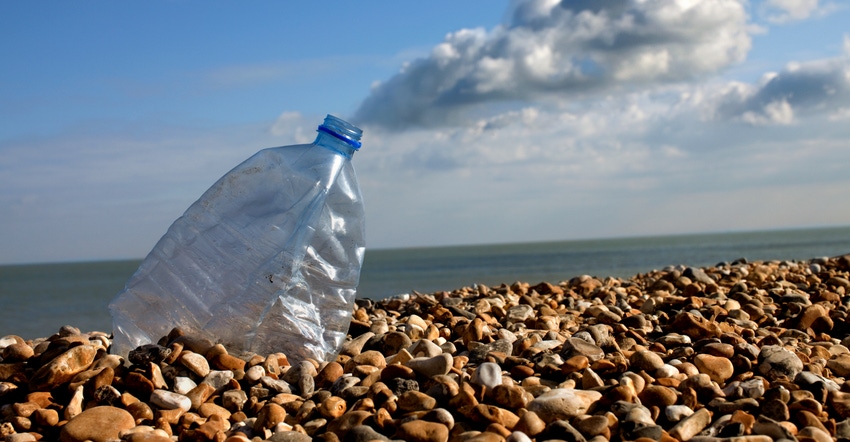The use of plastic credits is becoming increasingly crucial to brands that are facing mounting consumer and governmental pressures to reduce their environmental impacts. Still, there are a lot of questions to ask to understand how plastic credits work.

We’ve heard of carbon credits; companies buy them to offset greenhouse gas emissions associated with their supply chain but that aren’t within their control. As this commodity market matures, another one emerges, based on a similar concept. Organizations are selling plastic credits, with the revenue they generate invested in infrastructure to collect and process plastic and to pay workers who do the labor, mainly in developing countries.
While this model provides brands and other enterprises a way to offset their plastic footprint across the value chain, plastic credits are a whole new game, with relatively few early investors, mainly those using packaging in food and cosmetics.
But as brands face building pressure to cut packaging waste, and as big names announce big news— like Corona’s recent declaration it achieved net zero plastic—this new incentive, intended to help others achieve similar goals, is gaining attention.
Still, there are a lot of questions to ask to understand how plastic credits work. To know if you are investing in a project that upholds rigorous standards. And to know if and how the credit system will benefit all stakeholders—from “informal waste pickers” to corporations with environmental, social, and governance (ESG) ambitions, to recovery and recycling project developers.
Verra, who developed carbon credit standards, has developed plastic credit guidelines, in partnership with Quantis, as part of Verra’s Plastic Waste Reduction Program, which enables impact assessment of new or scaled-up waste collection and recycling projects. It’s used for accounting and crediting of these project types, with credits issued based on the amount collected and recycled above baseline rates (volumes prior to these projects).
The plastic standard underwent a two-year development process guided by environmental nongovernment organizations, recycling and waste management experts, and potential project developers. The idea was to get input to help structure requirements that can be applied to multiple collection or recycling scenarios, says Sinclair Vincent, director, Sustainable Development Innovation and Markets, Verra.
“A buyer of a plastic credit issued by Verra knows they are investing in a project that underwent an extensive audit process, including …quantification of the project’s activities. Corporations can use plastic credits to make credible claims about their plastic stewardship. And governments may even use them to jumpstart extended producer responsibility schemes within their country,” Vincent says.
Traceability of plastic credits is important, says Laura Peano, Quantis Global Plastics.
Her advice for them is that they prioritize reduction — eliminating unnecessary packaging and achieving supply chain circularity — and that they consider plastic offsets as an add-on.
“Traceability [enables transparency around the] plastic material type, the region where the plastic was collected or recycled, and collection and recycling processes [the activity and end destination of the material]. These details would help the company understand how its funding for credits has been used,” she says.
According to Verra’s guidelines, this information, along with the date of credit issuance, should be listed in publicly available project documentation and also be included in a serial number on individual credits.
Ultimately, impacts of a project registered under Verra’s plastic program extend beyond collection or recycling. And a plastic credit represents more than a ton of additional material recovered or put back into circulation, Vincent attests.
“In addition, the plastic standard [and credit concept] was designed to improve working conditions, safety and livelihoods of waste pickers, collectors and sorters; and spur companies to reduce the amount of virgin plastic used in their value chains,” he says.
There were multiple considerations, with the greatest being around diversity in people and processes involved.
“The collection process involves both formal and informal workers who feed into a system of transportation that in turn feeds into industrial recycling processes …
A project developer may be a traditional recycler or processor, but they could also be a social enterprise, grassroots organization, or company involved in developing new collection or recycling technologies,” Vincent says.
There are unique social and environmental implications attached to each step and stakeholder. In consideration of these variables and associated challenges, the plastic standard requires social and environmental safeguards to be implemented. Projects must also hold stakeholder consultations so that any party who is impacted can provide input on the project.
Sustaining this new incentive model will require establishing relationships. Long-term agreements with plastic credit buyers should provide income certainty to local workers while possibly enabling credit buyers to lock in fixed pricing for plastic credits.
Further, a stable program could support local economic development for instance by providing fair wages for waste collectors and generating new job opportunities, Peano says.
She speaks of a trend with brands, then goes on to offer them advice:
“In addition to setting plastic reduction targets, we are seeing some brands utilize plastic credits to offset what’s produced in the meantime.”
Her advice for them is that they prioritize reduction — eliminating unnecessary packaging and achieving supply chain circularity — and that they consider plastic offsets as an add-on.
“Before bringing offsets into the mix, companies should receive guidance on the targets and commitments that are most relevant to their business and set a science-based strategy. This enables them to address the biggest source of their plastic footprint, avoid using offsets as a replacement for reduction, and avoid shifting impact to other environmental areas.”
About the Author(s)
You May Also Like




